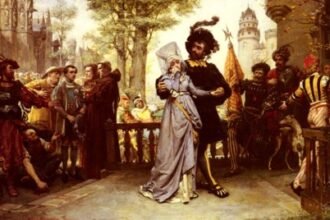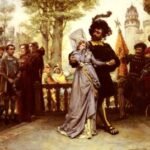Introduction: Who Was Chalino Sánchez?
Chalino Sánchez wasn’t just a singer; he was a symbol of defiance, resilience, and the harsh realities of life in Mexico’s narco culture. Born Rosalino Sánchez Félix on August 30, 1960, in a small village called Las Flechas in the Mexican state of Sinaloa, Chalino’s life story reads like a movie script. His rise to fame as the godfather of narcocorridos (songs that narrate the lives of drug traffickers and outlaws) wasn’t without struggle, controversy, and tragedy. From a humble beginning to a mysterious death, Chalino’s journey remains a significant chapter in the history of Mexican music and culture.
This article dives deep into Chalino’s life, music, and the legacy he left behind. By the end, you’ll understand why he continues to captivate fans decades after his untimely demise.
Humble Beginnings: Growing Up in Las Flechas, Sinaloa
Chalino Sánchez’s early life was anything but glamorous. Born into poverty, he grew up in a rural area where opportunities were scarce, and survival was a daily battle. His family lived in a small house with limited resources, and like many others in Sinaloa, they were no strangers to hardship. Chalino’s upbringing in such conditions shaped his worldview and later influenced the raw, unfiltered lyrics that would make him famous.
From a young age, Chalino displayed a rebellious streak. He wasn’t one to back down from a challenge, a trait that would later define his persona as a corrido singer. Tragedy struck early in his life when his older brother Chalino Sanchez, Armando, was murdered. This loss deeply affected Chalino and planted the seeds of the themes that would dominate his music: revenge, loyalty, and the harsh realities of life in the drug trade.
In his teenage years, Chalino Sanchez emigrated to the United States in search of a better life. Like many immigrants, he hoped to escape the poverty of his hometown and provide for his family. He settled in Los Angeles, where he worked various odd jobs, from washing dishes to picking fruits in California’s agricultural fields. These experiences exposed him to the struggles of the immigrant community, adding another layer of authenticity to his music.
The Birth of a Musical Career: From Troubled Youth to Corrido Icon
Chalino’s entry into music wasn’t planned; it was almost accidental. He didn’t have formal training, nor did he initially aspire to be a singer. His foray into music began when he started writing corridos for friends and acquaintances. These personalized ballads told stories of their lives, struggles, and often their involvement in illegal activities. Chalino had a knack for capturing the essence of these tales, and his lyrics resonated with those living on the fringes of society.
His first steps into the recording world were modest. He began by selling homemade cassette tapes of his songs at swap meets, local parties, and out of the trunk of his car. This grassroots approach allowed him to connect directly with his audience, many of whom saw their own lives reflected in his music. Chalino wasn’t singing about abstract concepts; he was narrating real stories, often involving real people.
What set Chalino apart was his unpolished voice and raw delivery. Critics might have dismissed him as lacking technical skill, but his fans embraced his authenticity. His music wasn’t about perfection; it was about truth. In an era where polished pop stars dominated the charts, Chalino’s gritty sound was a breath of fresh air for those who felt ignored by mainstream culture.

Narcocorridos: The Controversial Genre That Defined Chalino
Chalino Sánchez is often credited with popularizing the narcocorrido genre, a subcategory of the traditional Mexican corrido. These songs focus on the lives of drug traffickers, smugglers, and outlaws, painting vivid pictures of their exploits and struggles. While traditional corridos celebrated historical figures and folk heroes, narcocorridos brought these stories into the modern era, often glorifying figures involved in the drug trade.
For Chalino, narcocorridos weren’t just a musical style; they were a way of life. Growing up in Sinaloa, a region deeply entwined with the drug trade, he was surrounded by the very characters he later immortalized in his songs. His lyrics didn’t shy away from the harsh realities of this world, from violent confrontations to the constant threat of betrayal.
This authenticity earned Chalino a loyal fanbase but also brought him into conflict with authorities and rival groups. Narcocorridos were often viewed as controversial, with critics accusing them of glamorizing crime. Despite this, or perhaps because of it, Chalino’s popularity continued to grow. His songs became anthems for those who felt marginalized or misunderstood, offering a sense of pride and identity.
The Infamous Tuxpan Incident: A Turning Point
One of the most defining moments in Chalino’s life—and one that added to his legend—occurred during a live performance in Coachella, California, in 1992. In the middle of his set, an audience member handed him a note. Accounts differ about what the note said, but many believe it contained a death threat. Undeterred, Chalino finished his performance as if nothing had happened. This incident further cemented his reputation as a fearless and defiant figure.
However, it also highlighted the dangers Chalino faced as a public figure singing about sensitive and often illegal topics. The note wasn’t an isolated incident; Chalino had already survived an earlier attempt on his life when he was ambushed in Tijuana. He managed to kill one of his attackers and escape, but the event left a lasting impact.
Tragic End: The Mystery of Chalino’s Death
On May 16, 1992, just months after the Coachella incident, Chalino performed his final concert in Culiacán, Sinaloa. That night, he was stopped by men claiming to be police officers and asked to come with them for questioning. The next day, his body was found on the side of a road, blindfolded and shot in the back of the head. He was just 31 years old.
Chalino’s murder shocked his fans and fueled countless rumors and conspiracy theories. Some believe he was killed by a drug cartel, while others speculate it was a personal vendetta. To this day, the circumstances surrounding his death remain a mystery, adding to his mythos as a larger-than-life figure.
Legacy: Chalino’s Enduring Influence
Despite his untimely death, Chalino Sánchez’s influence on Mexican music and culture is undeniable. He paved the way for future generations of narcocorrido artists, including bands like Los Tigres del Norte and artists like Gerardo Ortiz. His unapologetic style and commitment to telling authentic stories resonated with audiences across borders, making him a cultural icon.
Today, Chalino’s music continues to be celebrated, especially among younger generations who discover his work through streaming platforms and social media. His songs remain as relevant as ever, offering a window into a world that many know only through headlines.
Conclusion: The Man, the Myth, the Legend
Chalino Sánchez wasn’t just a musician; he was a voice for the voiceless. His life and career embody the struggles, triumphs, and tragedies of a generation. From his humble beginnings in Sinaloa to his tragic end, Chalino’s story is a testament to the power of music to capture the human experience.
In death, as in life, Chalino remains a symbol of resilience and authenticity. His music, much like his legacy, refuses to be forgotten. Whether you see him as a hero, an outlaw, or something in between, there’s no denying the impact of Chalino Sánchez on Mexican music and culture.
















